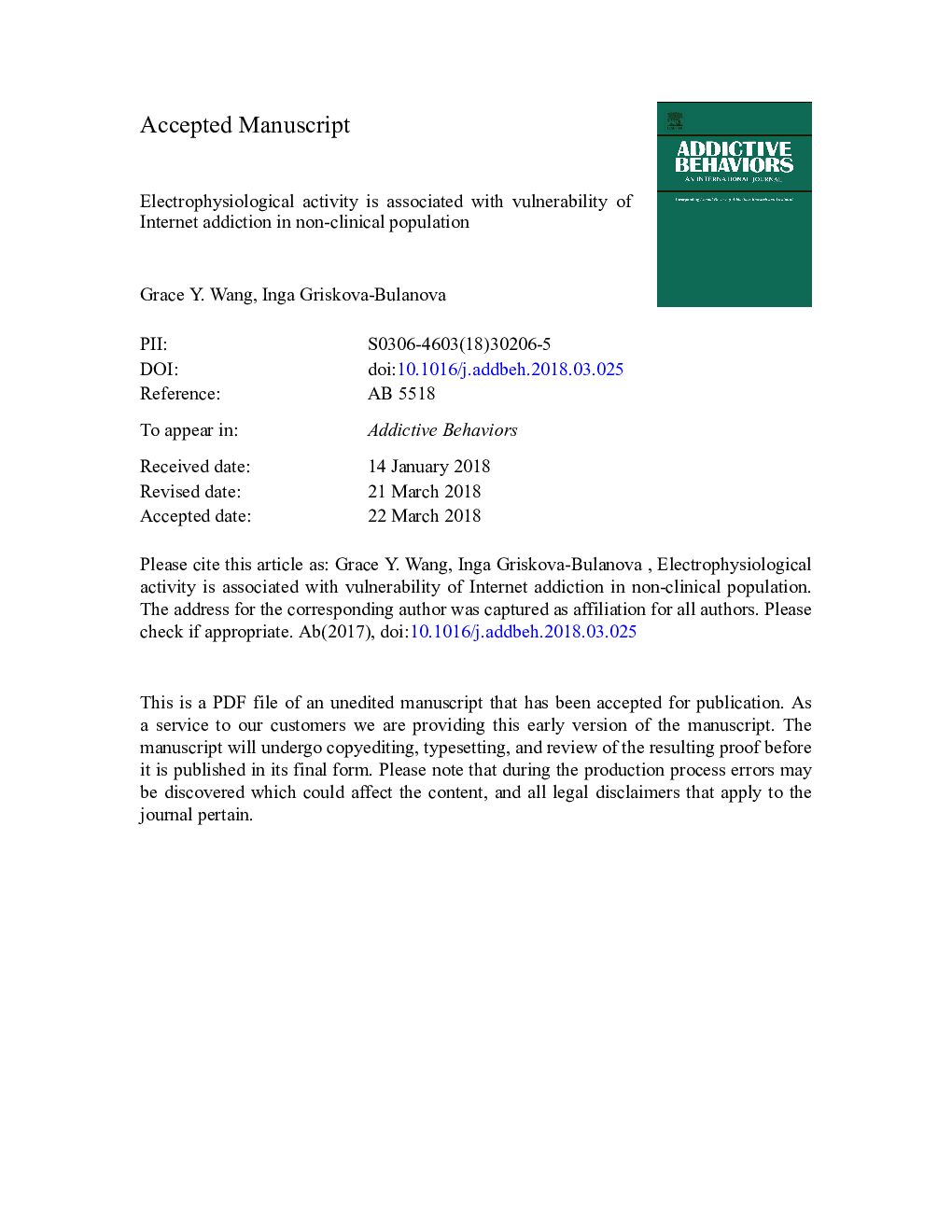| Article ID | Journal | Published Year | Pages | File Type |
|---|---|---|---|---|
| 7258979 | Addictive Behaviors | 2018 | 25 Pages |
Abstract
This study investigated the electrophysiological activity associated with vulnerability of problematic Internet use in non-clinical population. The resting EEG spectrum of alpha (8-13â¯Hz) rhythm was measured in 22 healthy subjects who have used the Internet for recreational purpose. The vulnerability of Internet addiction was assessed using Young's Internet Addiction Test (IAT) and Assessment for Computer and Internet Addiction-Screener (AICA-S) respectively. Depression and impulsivity were also measured with Beck Depression Inventory (BDI) and Barratt Impulsiveness Scale 11(BIS-11) respectively. The IAT was positively correlated with alpha power obtained during eyes closed (EC, râ¯=â¯0.50, pâ¯=â¯0.02) but not during eyes open (EO). This was further supported by a negative correlation (râ¯=â¯â0.48, pâ¯=â¯0.02) between IAT scores and alpha desynchronization (EO-EC). These relationships remained significant following correction for multiple comparisons. Furthermore, The BDI score showed positive correlation with alpha asymmetry at mid-lateral (râ¯=â¯0.54, pâ¯=â¯0.01) and mid-frontal (râ¯=â¯0.46, pâ¯=â¯0.03) regions during EC, and at mid-frontal (râ¯=â¯0.53, pâ¯=â¯0.01) region during EO. The current findings suggest that there are associations between neural activity and the vulnerability of problematic Internet use. Understanding of the neurobiological mechanisms underlying problematic Internet use would contribute to improved early intervention and treatment.
Keywords
Related Topics
Life Sciences
Neuroscience
Behavioral Neuroscience
Authors
Grace Y. Wang, Inga Griskova-Bulanova,
